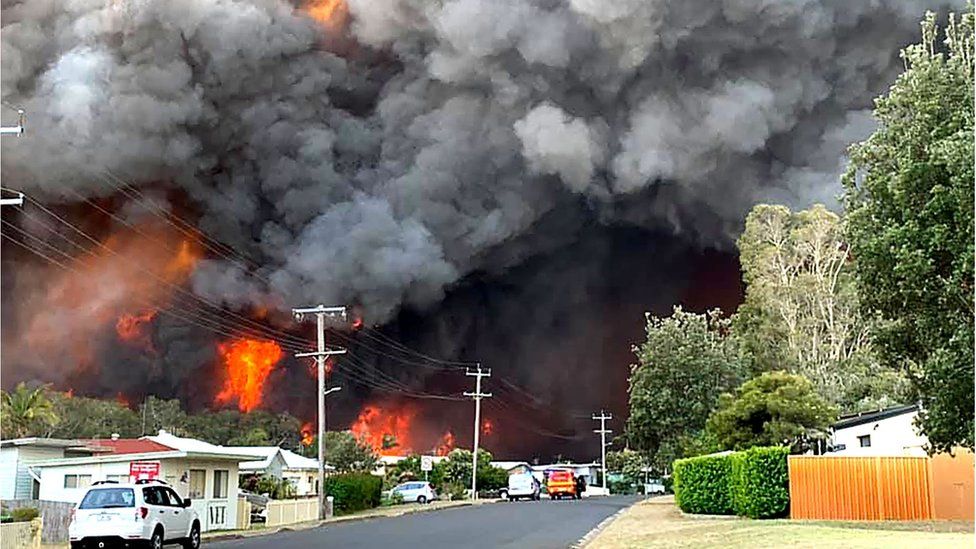From Analysis to Activity: Utilizing Your BAL Report to Reduce Bushfire Ris
From Analysis to Activity: Utilizing Your BAL Report to Reduce Bushfire Ris
Blog Article
Ensuring Bush Fire Protection With Appropriate BAL Report Evaluation
In the world of bush fire security, the thorough evaluation of Bushfire Assault Degree (BAL) reports stands as a foundation for securing homes against the destructive influence of wildfires. With ecological variables and residential property attributes playing considerable functions in figuring out the level of risk, an extensive understanding of BAL scores becomes important. The genuine essence lies not just in understanding these records yet in analyzing them effectively to create tailored fire protection techniques. By diving right into the significance of BAL record analysis, we uncover a world where informed choices pave the course towards reinforcing residential property safety and strength in fire-prone regions.
Comprehending Bushfire Strike Level (BAL)
In the realm of bushfire protection, comprehending the Bushfire Assault Level (BAL) is extremely important for making certain effective mitigation strategies. Recognizing the BAL ranking of a home is essential for building contractors, policymakers, and owners to apply ideal actions to guard versus bushfire dangers.

Value of BAL Record Evaluation
A crucial element in bushfire security preparation includes the extensive analysis of BAL records to evaluate the potential dangers and identify appropriate reduction techniques. BAL reports offer vital details regarding the possible effect of bushfires on a home based on various variables such as plants type, distance to possible fire dangers, and incline of the land. Examining these reports with accuracy is extremely important in establishing efficient bushfire protection procedures tailored to the specific threat account of a residential or commercial property.
Implementing Fire Security Steps
Applying efficient fire security actions is important for guarding buildings in bushfire-prone areas. This includes clearing up flammable plants, such as completely dry leaves and branches, within a specific span of the residential or commercial property.
In addition, having a appropriate and well-maintained water supply, such as a tank or swimming pool, can help firefighters in their initiatives to secure the residential property. BAL Report. Generally, implementing a mix of these fire defense steps can considerably increase the opportunities of securing properties throughout bushfire occasions.
Mitigating Risks in Fire-Prone Locations
To strengthen properties versus bushfire dangers, a tactical concentrate on mitigating threats in fire-prone locations is vital. Mitigating risks in fire-prone areas entails a thorough technique that incorporates different steps to minimize the probability and effect of bushfires. One important element of risk reduction is maintaining defensible space around buildings by getting rid of combustible plants, making certain ample spacing between trees and structures, and using fire-resistant landscaping methods. Additionally, implementing ember-proofing measures such as setting up steel mesh displays on windows and covering roof covering tooth cavities can assist prevent ember attacks and reduce the risk of spot fires.
Additionally, building or why not try these out retrofitting buildings with fire-resistant materials and guaranteeing appropriate upkeep of roofing systems, rain gutters, and exterior cladding can considerably enhance the home's resilience to bushfires. Developing and exercising a bushfire emergency situation plan with all owners, consisting of evacuation procedures and interaction approaches, is also vital in mitigating threats efficiently. By embracing a positive method to take the chance of mitigation in fire-prone areas, homeowner can much better secure their assets and enhance total bushfire readiness.
Ensuring Residential Property Security and Durability
Ensuring the safety and resilience of residential properties in fire-prone areas calls for an unfaltering dedication to durable preventive measures and strategic preparation. Property safety and security begins with implementing reliable steps to decrease fire hazards. This includes preserving a defensible area around the residential property by clearing flammable greenery, making certain appropriate upkeep of roofs and seamless gutters, and making use of fire-resistant building materials. Routine maintenance of firefighting equipment, such as click resources pipes and lawn sprinkler, is likewise essential to residential property resilience.
Resilience, on the other hand, involves the capacity of a residential or commercial property to endure and recuperate from a bushfire. This can be improved with the setup of ash guards on home windows and vents, making certain that access factors for coal are minimized. In addition, having a well-balanced evacuation plan and practicing it routinely can substantially raise residential property strength. Collaborating with neighbors and local fire authorities can likewise reinforce the security and strength of homes in fire-prone locations. By proactively resolving these facets, residential or commercial property owners can much better shield their properties and liked ones from the threat of bushfires.
Conclusion
To conclude, guaranteeing bushfire defense through appropriate BAL record analysis is critical for comprehending the degree of danger postured by bushfires and executing necessary fire defense measures. By alleviating threats in fire-prone areas and ensuring building safety and durability, neighborhoods and people can better get ready for and reply to bushfire occasions. It is vital to prioritize fire precaution to secure lives and home in these risky environments.
In the realm of bush fire security, the careful analysis of Bushfire Assault Level (BAL) records stands as a keystone for safeguarding residential or commercial properties versus the terrible influence of wildfires (BAL Report). Recognizing the BAL score of a building is crucial for home building contractors, policymakers, and owners to implement proper steps to protect against bushfire threats

BAL records give essential info regarding the possible influence of bushfires on a residential or commercial property based on different aspects such as plant life kind, range to possible fire hazards, and slope of the land (BAL Report). learn the facts here now In general, carrying out a mix of these fire defense actions can considerably enhance the possibilities of guarding residential or commercial properties during bushfire events
Report this page